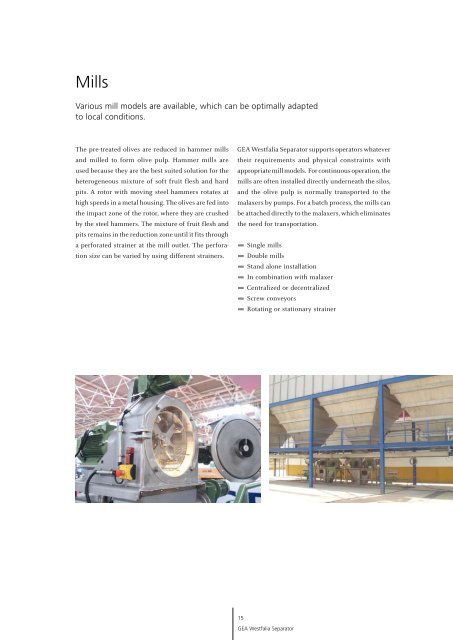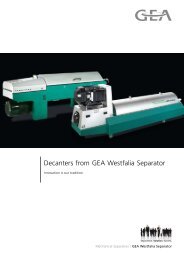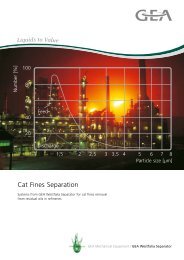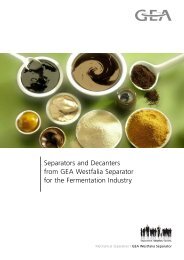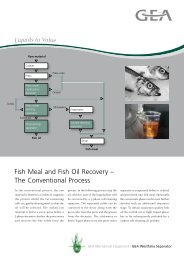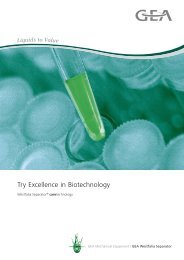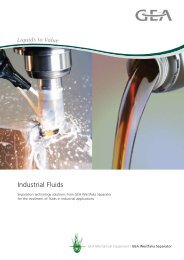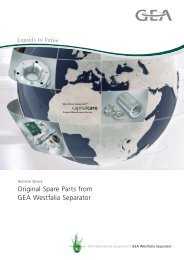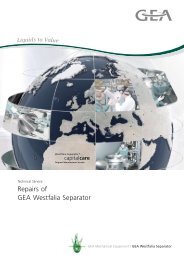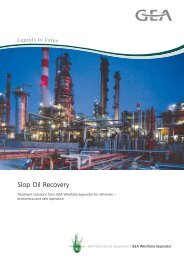Olive Oil Recovery pdf, 1.9 MB - GEA Westfalia Separator
Olive Oil Recovery pdf, 1.9 MB - GEA Westfalia Separator
Olive Oil Recovery pdf, 1.9 MB - GEA Westfalia Separator
You also want an ePaper? Increase the reach of your titles
YUMPU automatically turns print PDFs into web optimized ePapers that Google loves.
MillsVarious mill models are available, which can be optimally adaptedto local conditions.The pre-treated olives are reduced in hammer millsand milled to form olive pulp. Hammer mills areused because they are the best suited solution for theheterogeneous mixture of soft fruit flesh and hardpits. A rotor with moving steel hammers rotates athigh speeds in a metal housing. The olives are fed intothe impact zone of the rotor, where they are crushedby the steel hammers. The mixture of fruit flesh andpits remains in the reduction zone until it fits througha perforated strainer at the mill outlet. The perforationsize can be varied by using different strainers.<strong>GEA</strong> <strong>Westfalia</strong> <strong>Separator</strong> supports operators whatevertheir requirements and physical constraints withappropriate mill models. For continuous operation, themills are often installed directly underneath the silos,and the olive pulp is normally transported to themalaxers by pumps. For a batch process, the mills canbe attached directly to the malaxers, which eliminatesthe need for transportation.Single millsDouble millsStand alone installationIn combination with malaxerCentralized or decentralizedScrew conveyorsRotating or stationary strainer15<strong>GEA</strong> <strong>Westfalia</strong> <strong>Separator</strong>


